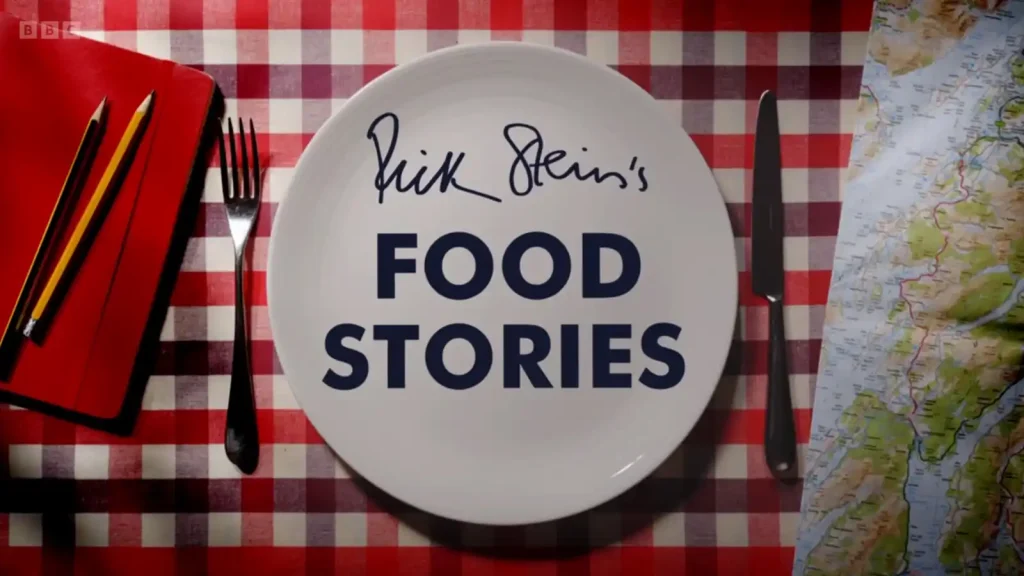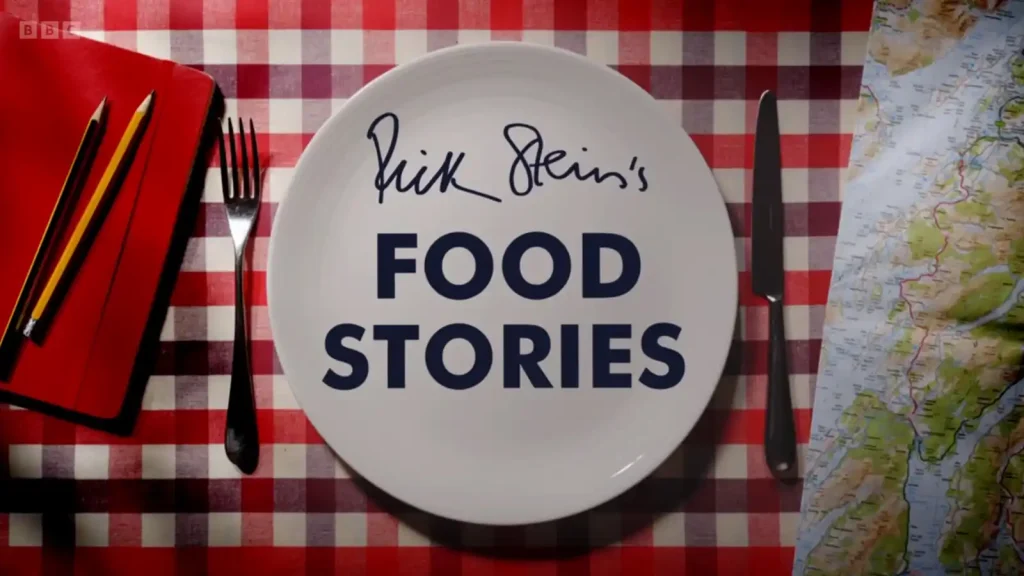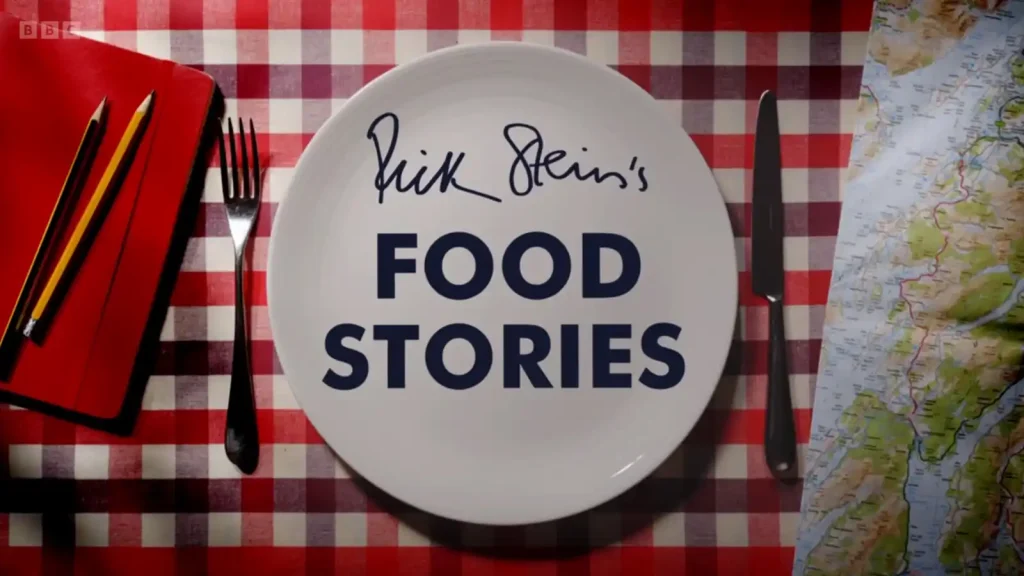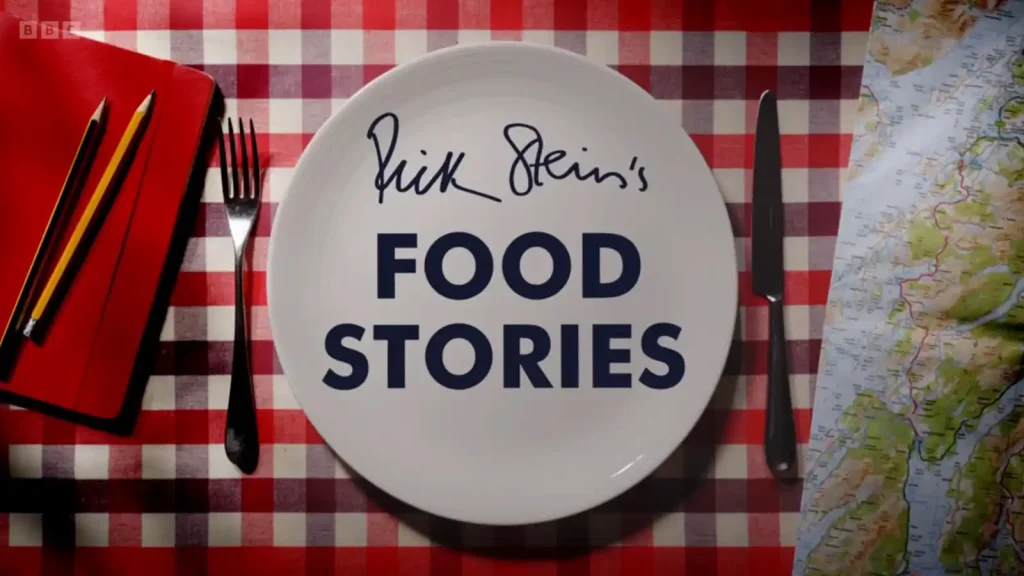In this vibrant Rick Stein’s Food Stories episode 7, Rick journeys to Bristol, a city known for its rich cultural tapestry and diverse culinary landscape. His first stop is at one of the city’s most dynamic Caribbean food kitchens, where he gets to savor the ultimate jerk chicken, prepared by a master chef who has become a local legend. This isn’t just any jerk chicken; it’s a dish infused with the spirit and flavors of the Caribbean, a perfect blend of spices and slow-cooked perfection that speaks volumes about Bristol’s multicultural heritage.
As Rick enjoys the tantalizing taste of the jerk chicken, he delves into the deeper history of Bristol, a city with a complex past and a vibrant present. He explores the roots of the African-Caribbean community in the city and how this has given rise to one of the most exciting cultural events in the UK—the Bristol African-Caribbean Carnival. Through conversations with local historians and carnival participants, Rick uncovers the stories of resilience, celebration, and cultural pride that have shaped this annual event. The carnival is more than just a party; it’s a powerful statement of identity and community, a way for the African-Caribbean population to celebrate their heritage and share it with the wider public.
Rick’s journey through Bristol’s cultural landscape doesn’t end there. He also visits a unique café that serves as a sanctuary for victims of modern slavery. Staffed by survivors who are rebuilding their lives, the café offers more than just food; it provides a space for healing and empowerment. Rick is moved by the stories of the people he meets here, hearing firsthand how the act of cooking and sharing meals can be a transformative experience, offering hope and a sense of purpose to those who have suffered unimaginable hardships.
Continuing his culinary exploration, Rick taps into one of the latest food trends sweeping the UK—fermented foods. Known for their health benefits and distinctive flavors, fermented foods have seen a resurgence in popularity, and Bristol is at the forefront of this movement. Rick visits a local artisan who is passionate about fermentation, learning about the processes involved in creating everything from tangy sauerkraut to probiotic-rich kombucha. Inspired by what he’s learned, Rick decides to put his own spin on a dish that has become a modern favorite in the UK—the burrito. He combines the traditional elements of a burrito with fermented ingredients to create a unique fusion that reflects Bristol’s innovative food scene.
Rick Stein’s Food Stories episode 7 – Bristol
Throughout the episode, Rick Stein not only showcases the incredible food of Bristol but also delves into the stories of the people behind the dishes. From the vibrant energy of the carnival to the quiet strength of the café staff, Rick paints a picture of a city that is as complex as it is colorful. Each dish he encounters is a testament to the resilience and creativity of the people who make Bristol such a special place. Whether it’s the rich spices of the jerk chicken, the healing power of a meal shared among survivors, or the bold flavors of a fermented burrito, Rick’s journey through Bristol is a celebration of the city’s unique spirit and its ever-evolving food culture.
In this episode, food is more than just sustenance; it’s a lens through which Rick explores the soul of Bristol. The city’s history, struggles, and triumphs are all reflected in its culinary offerings, making this episode a must-watch for anyone interested in the intersection of food, culture, and community.
Discovering Bristol’s Diverse Culinary Landscape
Rick Stein’s Journey Across the Suspension Bridge
As the iconic Suspension Bridge looms ahead, Rick Stein’s excitement is palpable. The majestic structure, a testament to Isambard Kingdom Brunel’s engineering genius, serves as a fitting gateway to Bristol’s vibrant food scene. Brunel once lovingly referred to this bridge as “my first child, my darling,” and it’s easy to see why. Its graceful arches stretch across the Avon Gorge, inviting visitors to explore the treasures that lie beyond.
Rick’s car hums along the bridge, each passing moment bringing him closer to a city brimming with culinary delights. The anticipation builds as he contemplates the myriad flavors waiting to be discovered. After all, Bristol isn’t just any city – it’s a melting pot of cultures, each leaving its unique imprint on the local gastronomy.
Bristol’s Multicultural Food Scene: 70 Languages and Counting
Imagine a city where nearly 70 different languages paint the streets with a rainbow of accents and dialects. That’s Bristol for you – a vibrant tapestry of cultures, each thread contributing to a rich and diverse food landscape. As Rick delves deeper into the city, he’s struck by the sheer variety of aromas wafting from bustling kitchens and street-side cafes.
From aromatic curries that transport you straight to the heart of South Asia to zesty Caribbean jerk chicken that sets your taste buds dancing, Bristol’s food scene is a gastronomic adventure waiting to unfold. The city’s multicultural nature isn’t just a statistic; it’s a living, breathing entity that manifests itself most deliciously through its food. Every dish tells a story, every flavor a testament to the journeys that brought these diverse communities together.
The City’s Historical Context: From Slave Trade to Modern Diversity
Bristol’s journey to becoming a culinary melting pot is as complex as it is fascinating. Once a major port and sadly, a hub of the British slave trade in the early 1700s, the city’s history is marked by both darkness and light. The recent toppling of slave trader Edward Colston’s statue serves as a poignant reminder of this turbulent past.
Yet, from this troubled history has emerged a city determined to embrace diversity and inclusivity. Today’s Bristol is a far cry from its historical roots, having transformed into a beacon of multiculturalism. The exploitation of human beings, once a grim reality, has given way to a celebration of different cultures and their contributions to the city’s fabric.
As Rick explores further, he discovers that modern Bristol is actively grappling with its past while forging a more inclusive future. This spirit of reconciliation and growth is perhaps most evident in the city’s food scene. Here, cuisines from across the globe don’t just coexist – they intermingle, creating exciting fusions and new culinary traditions.
Houria: A Taste of Freedom and Cultural Exchange
Houria Cafe and Its Mission
Nestled in the heart of Bristol, Houria cafe stands as a beacon of hope and culinary delight. The name itself, meaning “freedom” in Arabic, sets the tone for this unique establishment. As you step through its doors, you’re not just entering a cafe, but a sanctuary where food and social justice intertwine in the most delicious way possible.
Houria’s mission goes far beyond serving mouthwatering dishes. At its core, this cafe is a lifeline for migrant women, many of whom have survived the horrors of modern slavery. Here, they find not just employment, but a safe haven where they can rebuild their lives one recipe at a time. The kitchen buzzes with activity, filled with the sounds of sizzling pans and laughter, a testament to the healing power of culinary arts.
A Culinary Melting Pot: International Dishes on the Menu
Egyptian Koshari
As Rick observes the bustling kitchen, his eyes are drawn to Amel, expertly crafting Egypt’s national dish, Koshari. This hearty mix of rice, lentils, pasta, and a spicy tomato sauce is comfort food at its finest. The aroma of cumin and garlic wafts through the air, transporting diners straight to the bustling streets of Cairo.
Koshari isn’t just a dish; it’s a symbol of Egypt’s multicultural history. Much like Houria itself, it brings together diverse elements to create something truly extraordinary. As Amel stirs the pot, she’s not just cooking – she’s sharing a piece of her heritage, inviting everyone to taste the warmth of her homeland.
Pakistani Chicken Pulao
Next to Amel, Mariam is lovingly preparing Chicken Pulao, a fragrant rice dish that’s a staple in Pakistani cuisine. The kitchen fills with the intoxicating scent of aromatic spices – cardamom, cinnamon, and cloves dance in the air. Mariam’s hands move with practiced ease, a reflection of countless family gatherings where this dish took center stage.
As the chicken simmers in its flavorful broth, Mariam shares that this Pulao is more than just food – it’s a taste of home, a reminder of the family she left behind. Yet, in creating this dish at Houria, she’s found a new family, one bound together by shared experiences and a love for good food.
British-West African Salt Cod Fishcakes
Completing this culinary trinity is Kim, crafting Salt Cod Fishcakes that bridge her British roots with her West African heritage. The humble fishcake is elevated to new heights, infused with bold flavors and a dash of culinary creativity. As Kim shapes each patty, she’s not just cooking – she’s telling a story of cultural fusion and innovation.
These fishcakes represent the beautiful complexity of Bristol’s food scene. They’re a delicious reminder that when cultures come together, magic happens in the kitchen. Kim’s creation is more than a menu item; it’s a edible representation of Bristol’s multicultural spirit.
The Power of Food in Healing and Transformation
At Houria, food is more than sustenance – it’s a powerful tool for healing and transformation. As these women work side by side, sharing recipes and life stories, something remarkable happens. The kitchen becomes a classroom, a therapy session, and a launching pad for new beginnings all rolled into one.
For many of these women, cooking at Houria is their first step towards reclaiming their lives. With each dish they master, their confidence grows. The skills they learn here aren’t just culinary – they’re life skills that pave the way for independence and self-sufficiency. In this nurturing environment, wounds begin to heal, and dreams take root.
Chipotle chicken burrito with curtido

Fermented vegetables play a significant role in Central American cuisine, particularly in the form of ‘curtido,’ a tangy and refreshing mix of white cabbage, carrots, and onions, seasoned with fresh coriander. This traditional condiment, often likened to a Latin American version of sauerkraut, brings a delightful crunch and a vibrant sour note that perfectly balances the richness of the other ingredients in many dishes. Whether served alongside pupusas, tacos, or grilled meats, curtido adds a lively burst of flavor that enhances and elevates the entire meal, making it an essential element in the region’s culinary tradition.
Ingredients:
- 2 boneless chicken breasts, skin on
- vegetable oil, for frying
- 30g/1oz lard
- 1 onion, chopped
- 1 large garlic clove, chopped
- ½ tsp dried oregano
- 400g tin black beans or kidney beans, drained and rinsed
- 4 large flour tortillas
- handful finely shredded cabbage or lettuce
- 1 ripe avocado, sliced
- 2 tbsp chipotles in adobo
- 4 tsp soured cream, plus extra to serve
- 2 tomatoes, sliced or chopped
- small handful fresh coriander, roughly chopped
- 70g/2½oz Lancashire cheese, crumbled
- 4 tbsp kimchi or curtido, plus extra to serve
- salt and black pepper
Method:
- Cut the chicken into slices 3–4mm thick. To assemble the burrito, lay the tortillas out on a worktop. Divide the bean mix, cabbage, chicken slices, avocado, chipotles in adobo, soured cream, tomato and coriander between the tortillas, placing the ingredients on the half nearest you. Top with crumbled cheese and curtido or kimchi. Fold in the sides, then fold up the bottom and roll tightly tucking the sides in. Cut in half on an angle and serve with extra soured cream and kimchi or curtido.
- Preheat a barbecue or griddle pan. Brush the chicken with a little oil and season well with salt and pepper. Grill the chicken until cooked through – the internal temperature at the thickest part should be at least 70C. Keep the chicken warm.-
- While the chicken is cooking, heat the lard in a frying pan and fry the onion and garlic until softened. Stir in the oregano, then add the black beans and warm them through thoroughly. Season with salt and pepper, then roughly mash the beans with the back of a wooden spoon or potato masher, if you like. Set aside the bean mixture to keep warm.
- Briefly soften the tortillas on the barbecue or griddle to make them pliable. Alternatively, wrap them in foil and warm them in a 150C/130C Fan/Gas 2 oven for 5–10 minutes or in a microwave for 30 seconds.
F.A.Q. Rick Stein’s Food Stories episode 7 – Bristol
Q.: What is the main focus of Rick Stein’s Food Stories episode 7?
A.: In episode 7 of Rick Stein’s Food Stories, the focus is on exploring Bristol’s rich cultural diversity through its vibrant culinary scene. Rick Stein highlights the city’s dynamic Caribbean food culture, especially by experiencing a locally renowned jerk chicken, and delves into the broader cultural and historical context that shapes the city’s food offerings.
Q.: How does Rick Stein connect Bristol’s food scene with its historical context?
A.: Rick Stein connects Bristol’s food scene to its historical context by exploring the city’s African-Caribbean heritage and its impact on local cuisine. He visits the Bristol African-Caribbean Carnival, learning how this event celebrates cultural resilience and pride, while also reflecting on Bristol’s complex history, including its ties to the transatlantic slave trade.
Q.: What is the significance of the café Rick visits in this episode?
A.: The café that Rick Stein visits in this episode serves as a sanctuary for survivors of modern slavery. It is significant not only for its unique and heartfelt mission of providing employment and a safe space for rebuilding lives but also for its role in demonstrating how food can be a powerful tool for healing and empowerment.
Q.: How does Rick Stein incorporate the trend of fermented foods into this episode?
A.: Rick Stein taps into the trend of fermented foods by visiting a local Bristol artisan who specializes in fermentation. He learns about the health benefits and culinary uses of fermented products like sauerkraut and kombucha, which inspire him to create a fusion dish—a burrito with fermented ingredients, reflecting Bristol’s innovative and evolving food culture.
Q.: What message does Rick Stein convey through his exploration of Bristol’s food culture?
A.: Through his exploration of Bristol’s food culture, Rick Stein conveys the message that food is not just about sustenance but also a lens through which we can understand and appreciate a city’s history, culture, and community spirit. Each dish featured in the episode serves as a narrative of resilience, creativity, and multiculturalism, highlighting Bristol as a city that celebrates its diverse heritage through its cuisine.
Conclusion: Bristol’s Culinary Tapestry
Reflecting on Bristol’s International Food Scene
Bristol’s culinary landscape is a vibrant mosaic, each tile representing a different culture, tradition, and flavor. As Rick Stein’s journey through the city comes to a close, he can’t help but marvel at the rich tapestry of tastes he’s experienced. From the heartwarming dishes at Houria to the fiery jerk chicken at Gullu’s Kitchen, Bristol’s food scene is a testament to the city’s diversity and inclusivity.
The city’s international food scene is more than just a collection of restaurants; it’s a living, breathing entity that evolves with each new arrival. Ethiopian injera bread sits comfortably next to British fish and chips, while Jamaican patties rub shoulders with Polish pierogi. This culinary diversity isn’t just about satisfying adventurous taste buds; it’s a reflection of Bristol’s open arms and welcoming spirit.
The Power of Food in Cultural Exchange and Community Building
Food, as Rick has discovered, is far more than mere sustenance in Bristol. It’s a universal language that bridges gaps, builds connections, and fosters understanding between diverse communities. The city’s eateries serve as informal ambassadors, introducing diners to new cultures one bite at a time.
Take Houria, for instance. This cafe doesn’t just serve delicious meals; it’s a catalyst for social change. By empowering migrant women, many of whom are survivors of modern slavery, Houria uses food as a tool for healing and integration. Similarly, the St. Paul’s Carnival, with its array of Caribbean delicacies, has become a symbol of community pride and cultural celebration.
Moreover, Bristol’s food scene is a powerful force for community building. Local markets and food festivals bring people together, creating spaces where cultural exchange happens organically. These gatherings are melting pots in the truest sense, where the aroma of spices from around the world mingles with the sound of different languages and laughter.
Rick’s Mexican-inspired Burrito: A Fusion of Global Flavors
As a fitting finale to his Bristol food adventure, Rick decides to create a dish that encapsulates the city’s multicultural essence. His choice? A Mexican-inspired burrito that incorporates elements from his culinary journey through Bristol. This isn’t just any burrito; it’s a edible representation of the city’s diverse flavors and Rick’s own culinary experiences.
The burrito starts with a warm flour tortilla, a nod to the global wheat trade that once flowed through Bristol’s port. Inside, Rick layers refried beans, a staple of Mexican cuisine, but adds a twist by using locally sourced ingredients. The chicken is seasoned with a blend of spices inspired by the jerk seasoning he encountered at Gullu’s Kitchen, creating a fusion of Caribbean and Mexican flavors.
But the star of this burrito is the curtido, the fermented relish Rick learned about at Worminster Farm. This Central American condiment adds a tangy crunch that perfectly complements the rich flavors of the chicken and beans. The addition of curtido isn’t just about taste; it’s a metaphor for how Bristol has embraced and integrated international cuisines into its own culinary identity.
As Rick takes a bite of his creation, he’s struck by how seamlessly the different flavors come together. It’s not just a burrito; it’s Bristol on a plate. The spicy kick of the jerk-inspired chicken, the earthy comfort of the beans, and the zesty freshness of the curtido – each element tells a story of migration, adaptation, and culinary innovation.
This burrito, much like Bristol itself, proves that when diverse elements come together, the result can be something truly extraordinary. It’s a delicious reminder of the city’s ability to welcome, integrate, and celebrate its multicultural heritage through food. As Rick savors each bite, he reflects on how this simple dish encapsulates the essence of his journey through Bristol’s vibrant food scene – a journey of discovery, connection, and above all, incredible flavors.




